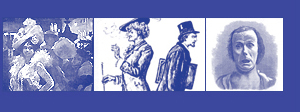Wrongful confinement
Author: Mary Elizabeth Braddon
Title: Lady Audley’s Secret (London: Virago Press, 1985).
First published in 1862. pp. 244-249, 322-333
Keywords: mad, madness, eccentric, private lunatic asylums, mad doctors, conduct, secret, monomania, taint, proprietor, seeds of madness,
Pages: Introduction | 1 | 2 | 3 | 4 | 5 | 6 | 7 | 8 | 9 | 10 | 11 |
Introduction
In Lady Audley’s Secret (1862), Mary Elizabeth Braddon offered her readers an entirely new kind of criminal: a beautiful, young, assertive, provocative, upper class woman. Locating crime and deviance in heart of the private, domestic sphere, ‘sensation novels’ like Lady Audley’s Secret were responsible for subverting a number of nineteenth-century ideologies, and inverting the stereotypes of the domestic novel. Filled with bigamy, immoral sexual passion, insanity, vice, and attempted homicide, Lady Audley’s Secret thrilled its readers and horrified its conservative critics.
They were all novels with a secret, and in Lady Audley’s Secret, the central mystery of the novel is Lady Audley’s latent insanity. In the first excerpt, Lady Audley attempts to convince her husband that his nephew, Robert Audley (her arch enemy), is a monomaniac. In the second excerpt, after the sensational exposure of her crime and her madness, she is incarcerated in a private asylum in Belguim. Braddon, like Charles Reade, was a sharp delineator of mid-nineteenth century society and its contradictory cultural values. As these two excerpts demonstrate, she was interested also in exploring the complex relationship between reason and unreason as it was understood (and misunderstood) by the Victorian public. Novels like Lady Audley’s Secret were alluring precisely because of their topicality and so proximity to the real lives of their readers.
Back to Wrongful confinement documents | Introduction | 1 | 2 | 3 | 4 | 5 | 6 | 7 | 8 | 9 | 10 | 11 |

